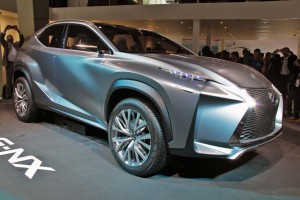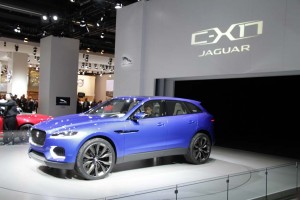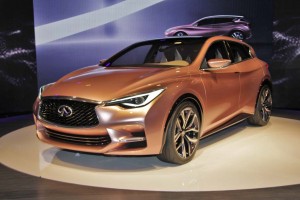
The Lexus LF-NX may have been the single most controversial vehicle to debut in Frankfurt this year.
It created quite a buzz – and more than a bit of controversy – when Lexus officials lifted the covers off the angular LF-NX concept vehicle during the Frankfurt Motor Show earlier this month. But while the edgy look is a subject of hot debate among industry insiders and potential buyers alike, there’s one thing everyone seems to agree on: Lexus, like its competitors, critically needs to add a compact crossover to its line-up.
And the maker isn’t alone. In fact, an assortment of production models and compact crossover concept vehicles shared the stage during this year’s Frankfurt Motor Show, and even more are expected to make their debut in the months ahead as brands as diverse as Infiniti, Lincoln, Cadillac and even Jaguar enter the fray.
“We’re all reading the same tea leaves,” suggests Mark Templin, the new global chief executive for Lexus, Toyota Motor Co.’s luxury brand.
Global sales of C-segment – as in “compact” – crossover-utility vehicles are expected to grow by about 1 million units, to 8.1 million, over the next three years, according to IHS Automotive. That would make such vehicles, collectively, one of the industry’s largest product niches, at roughly 10% of overall automotive sales. In North America, meanwhile, sales are expected to jump from 2.3 million to 3.3 million during the same period.
(For a closer look at the Lexus LF-NX Concept, Click Here.)
David Leone, an executive chief engineer at Cadillac, predicts the compact CUV segment soon “could be one of the three biggest segments in the luxury market.” But it is expected to grow rapidly in more mainstream segments, as well.
The reasons for the growth are numerous. For one thing, there’s the growing focus on fuel economy, driven by both rising gas prices and by tough new mileage and emissions standards. Manufacturers will have a tough time meeting their targets without downsizing, industry analysts warn.
(Jaguar reveals its first-ever crossover. Click Here for more.)
But, “For a consumer looking to maintain some utility while getting better mileage, you’ll get a lot more out of a compact crossover than you would from a compact sedan,” says Stephanie Brinley, an IHS Automotive strategist.
She also notes that crossovers are one of the rare “global” body styles clicking with consumer in Boston, Beijing and Berlin. That can’t be said of other, high-utility models like minivans, wagons or hatchbacks.
While the Lexus LF-NX is expected to undergo significant design changes before reaching market, the luxury maker will have a production model ready in short order, joining the more mainstream Toyota brand. Nissan has scored a success with its mainstreadm Rogue model and will soon add a production version of the Infiniti Q30 concept vehicle unveiled in Frankfurt. Perhaps the big surprise at the German show was the unveiling of the Jaguar C-X17 concept – which would share the same, underlying platform as a new compact sedan the British maker is developing.
“We’d be fools not to explore every possibility,” admits Kevin Stride, Jaguar’s senior vehicle line director, acknowledging it may be time for the maker to step out of its traditional niche building sporty sedans, sports cars and coupes.
(Is the Infiniti Q30 the shape of things to come? Click Here to find out.)
BMW recently added the compact X1 to its line-up and Audi and Mercedes-Benz will follow, the latter with the GLA model also unveiled in Frankfurt. Earlier in the year, Ford Motor Co.’s Lincoln brand revealed a concept crossover dubbed the MKC, and a production model should reappear by the time of the 2014 Detroit Auto Show, in January. Cadillac, meanwhile, is planning to bring one of its own small CUVs to market by 2015.
But don’t be surprised to see the industry targets even smaller products in the near-future, says IHS analyst Brinley. The consulting firm projects that sales of pocket-sized B-segment crossover will more than double over the next three years, sales jumping from 1.12 million in 2013 to 2.48 million in 2016.
But it’s the compact segment that the industry – along with consumers — is especially excited about.
“We’re going to be seeing a lot of growth,” says Cadillac’s Leone, “which makes it a very exciting segment.”
(This story first appeared on NBCNews.com)



Basically car makers want to have a competitive model for every price point so that they don’t lose ANY sales. In theory that sounds good if the cost to produce, inventory and support all of these additional models doesn’t exceed the revenue they generate.
The idea of attracting customers with entry level models like BMW, Audi, Caddy and Mercedes aere doing has some merit but their is also a price for diluting the brand, IME. There is a fine line and it can be costly once you cross it.